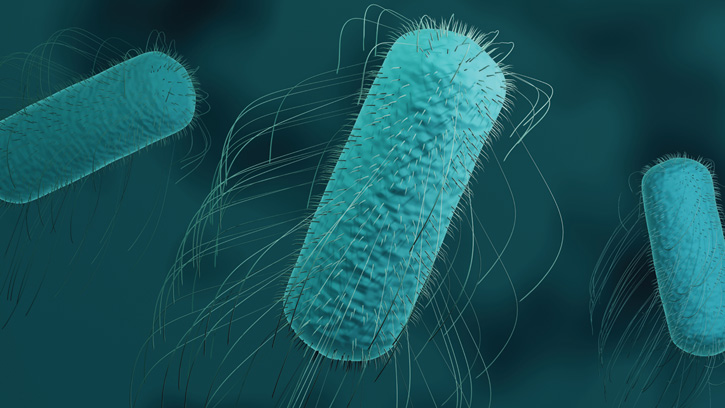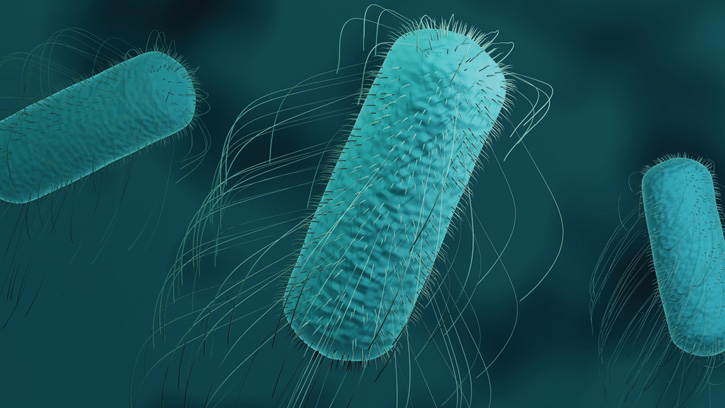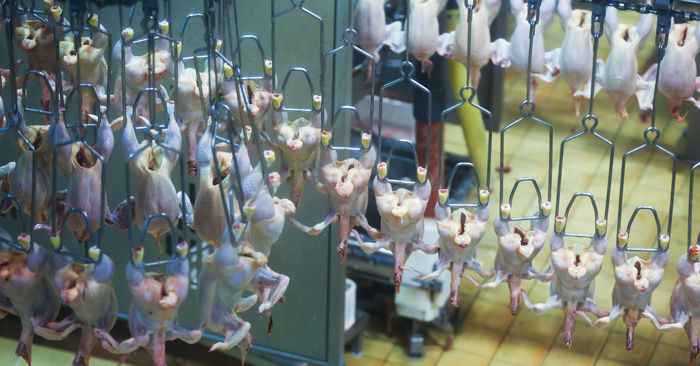Reevaluating Salmonella in Poultry
Safety & Quality | APPLIED SCIENCE
“If you look across all of the outbreak data from products that FSIS regulates, the greatest number of illnesses are Salmonella infections from poultry,” Sandra Eskin, U.S. Department of Agriculture (USDA) Deputy Under Secretary for Food Safety, recently told Food Technology. “That really requires us to take another look at how we address this issue.”
In the past few years, the agency has made the reevaluation of strategies to control Salmonella in poultry and its impact on public health a top priority. In 2022, the USDA’s Food Safety and Inspection Service (FSIS) proposed a regulatory framework for a new comprehensive strategy to reduce Salmonella illnesses attributed to poultry (USDA 2022). In a separate but related process, FSIS will declare Salmonella an adulterant in breaded and stuffed raw chicken products. Although these products are clearly labeled as not-ready-to-eat (NRTE), the agency said in a press release, they still have the potential to be consumed raw or undercooked by consumers, putting consumers at greater risk for foodborne illness.
New data support the agency’s reevaluation efforts. For example, in its most recent report, the Interagency Food Safety Analytics Collaboration, a tri-agency group created by the Centers for Disease Control and Prevention (CDC), the U.S. Food and Drug Administration (FDA), and USDA-FSIS, estimated that more than 23% of foodborne Salmonella illnesses are due to poultry consumption, nearly 17% from chicken and more than 6% from turkey (IFSAC 2021). Over the years, the poultry industry has collaborated with scientists and worked to reduce these numbers by implementing a variety of hurdles and interventions in the barn and in the processing plant. While they have been able to reduce Salmonella numbers on raw poultry products, this has not translated into an improvement of human health. Despite a downward trend in Salmonella detected from chicken carcasses and ground turkey, Salmonella infections in the United States continue to climb or remain constant from year to year (FoodNet Fast 2022).
In addition, the Pew Charitable Trust published a report with data summarizing America’s Salmonella problem (PEW 2021). The organization stated that under present FSIS policies, efforts to curb contamination are judged by the percentage of samples that contain any amount or serotype of Salmonella. Using presence/absence testing for Salmonella prevalence, data has shown a decline in contamination rates over the past 20 years for certain chicken products. However, the number of outbreaks associated with chicken products rose from 2000 to 2018. The report concluded that the current FSIS rules do not reduce the public health risk of Salmonella infection.
“That is the real driver for this [strategy],” Eskin adds. “Salmonella infections, they’re not budging.” Because of this disconnect, FSIS is moving toward declaring Salmonella as an adulterant in certain raw chicken products. Currently, FSIS is considering the limit at 1 CFU/g for these products, a level that the agency believes will significantly reduce the risk of illness from consuming these products. In a statement, FSIS said it also will seek comment on whether a different standard for adulteration—such as zero tolerance or one based on specific serotype—would be more appropriate.
The Adulterant Question
On Jan. 19, 2020, the law firm Marler Clark LLP filed a petition on behalf of several plaintiffs, including victims of salmonellosis poisoning, to USDA-FSIS requesting that the agency declare 31 Salmonella serotypes associated with outbreaks as adulterants in meat and poultry products (Marler Clark 2020). The petition argues that “each of these outbreak serotypes has a demonstratable history associated with either an illness outbreak or a product recall and is proven to be injurious to human health … [constituting] an imminent threat to public health necessitating prompt agency action.”
“Ninety percent of my law firm’s revenue in the ‘90s was Escherichia coli [O157] cases linked to hamburger,” admits attorney and food safety advocate Bill Marler, who filed the petition. “It’s presently near zero.”
Marler attributes this drop in cases to regulations that named E. coli O157:H7 and certain non-O157 Shiga toxin-producing E. coli (STEC) as adulterants in ground beef. His law firm, Marler Clark litigated the Jack in the Box E. coli O157:H7 foodborne illness outbreak in 1993, which killed four children and sickened at least 732 people across four states. The Jack in the Box outbreak and resulting lawsuit was a major driver for the updated E. coli O157:H7 regulations. Like the E. coli case, notes Marler, declaring outbreak-linked Salmonella serovars as adulterants makes sense if the aim is to reduce foodborne illness associated with the pathogen.
Unlike E. coli O157, however, the USDA does not have a zero tolerance policy for Salmonella on raw poultry. Instead, they have Salmonella performance standards. Poultry processors are required to regularly test for Salmonella by presence/absence. A processing plant may have up to 9.8%, 15.4%, and 24% of whole birds, parts, and ground chicken test positive for Salmonella, respectively.
Ashley Peterson, senior vice president of scientific and regulatory affairs with the National Chicken Council, noted in a press statement that this is one reason the trade group opposes FSIS’s proposed decision to consider Salmonella an adulterant in frozen and raw, breaded, stuffed chicken products.
“Chicken processors take a number of steps to reduce and control Salmonella during processing,” Peterson explained, “and final customary consumer cooking to an internal temperature of 165°F destroys any Salmonella that may remain. FSIS has never, since the Poultry Products Inspection Act was passed in 1957, taken the view that the mere presence of Salmonella on raw poultry renders the product adulterated.”
Peterson added that NCC is concerned about the precedent set by this abrupt shift in longstanding policy, made without supporting data, for a product category that has only been associated with one outbreak since 2015. “It has the potential to shutter processing plants, cost jobs, and take safe food and convenient products off shelves,” she said. “We’re equally concerned that this announcement was not science-based or data-driven.”
“[USDA FSIS’s] response is, we have looked at all the available science that we’ve been able to have our hands on, as well as data, and this decision is definitely supported by science and data,” Eskin responds.
“All of that is exactly the same language that was used in 1994 when FSIS declared O157 an adulterant,” Marler agrees. “The sky was going to fall, meat prices were going to go through the roof, and none of that happened. The [National] Chicken Council doesn’t exist to protect public health. They exist to protect the poultry industry.”
Although a cost-benefit study is not yet available for the new proposed Salmonella regulations, an analysis was conducted by FSIS for another pathogen of concern in raw meat products: non-O157 STEC (FSIS 2020). Like E. coli O157:H7, these non-O157 STEC are considered adulterants in raw non-intact beef products such as ground or trimmed beef. FSIS estimated that the cost for testing these beef products for non-O157 STEC pathogens is approximately $48.6 million annually. The agency estimated the benefit as $25.8 million for prevention of just one outbreak-related recall. FSIS extrapolated these data and postulated that if testing prevents a minimum of two outbreaks per year, the benefit ($51.6 million) would exceed the cost ($48.6 million). The FSIS itself also incurs costs for verifying that companies have recalled and properly disposed of adulterated products. Additional nonquantifiable benefits include improved public health, reduced illnesses, and improved industry practices.
Scientists Weigh In
Poultry scientist Steven Ricke, director of the Meat Science and Animal Biologics Discovery Program at the University of Wisconsin–Madison, does not fully agree with FSIS’s proposal. Calling Salmonella an adulterant in poultry is “too complex from an economic and practical standpoint,” Ricke explains. He calls for more research in preharvest, looking at prebiotics, organic acids, and encapsulated products in poultry feed that could reduce Salmonella contamination in the gut of the bird.
In a paper Ricke co-authored, researchers suggested the need to move from absence/presence testing to high throughput quantification postharvest to better detect and predict Salmonella risk from raw poultry (O’Bryan et al 2022). The authors also stressed the need for rapid serovar and strain identification accompanied by phenotypic characterization to provide a better risk assessment since not all serovars and strains pose the same pathogenic risk to the public.
Other scientists have questioned the utility of serotyping as a risk assessment tool. A review article in Frontiers in Animal Science described the identification of Salmonella serotypes (from a catalog of over 2,800) as a tedious, complex, and costly process. Because serotypes shift and often are found in multiples, the authors concluded that the benefit to the overall ‘Salmonella problem’ was negligible (Edrington and Brown 2022).
Baby Steps to Safety
There remain some challenges ahead for FSIS as the agency navigates its new strategy for reducing the number of Salmonella foodborne illnesses linked to poultry. For example, in January 2022, a Salmonella outbreak was reported when raw mechanically separated chicken was mishandled and undercooked by the kitchen staff in a Nebraska correctional facility. At least 100 inmates were negatively affected by the outbreak. Because it is inexpensive, mechanically separated chicken often is used in institutional settings such as prisons. The report recommended that because these populations have a limited choice regarding what they eat, providing a less contaminated poultry product is key to foodborne illness prevention. Raw mechanically separated chicken is not part of the new FSIS proposal for breaded poultry products, but it is a part of the broader general Salmonella reduction strategy framework.
USDA’s Eskin adds that education and labeling have not been enough to reduce Salmonella outbreaks linked to stuffed raw chicken products. She notes that FSIS will continue to invest in consumer research, education, and product labeling to promote safe handling and cooking of these and other poultry products in the home and in institutional settings.
In announcing USDA FSIS’ comprehensive Salmonella reduction strategy last fall, Agriculture Secretary Tom Vilsack remarked, “This important first step launches a broader initiative to reduce Salmonella illnesses associated with poultry in the United States.” But for some, it is only a baby step to safety.
“Given my 30-year history, I fear that the small steps that FSIS is making presently, we’re going to be continuing to revisit the Salmonella problem for the next decade,” Marler opines, while conceding that any movement forward is positive. “I’ve come to the conclusion that being supportive of FSIS’s baby steps and being available to be the crazy uncle in the room is probably the better approach.”
REFERENCES
USDA FSIS. (2022). Proposed Regulatory Framework to Reduce Salmonella Illnesses Attributable to Poultry. https://www.fsis.usda.gov/sites/default/files/media_file/documents/FINAL-Salmonella-Framework-10112022-508-edited.pdf.
IFSAC. (2021). Foodborne illness source attribution estimates for 2019 for Salmonella, Escherichia coli O157, Listeria monocytogenes, and Campylobacter using multi-year outbreak surveillance data, United States. https://www.cdc.gov/foodsafety/ifsac/pdf/P19-2019-report-TriAgency-508.pdf.
CDC. Foodborne Diseases Active Surveillance Network (FoodNet) Fast. Pathogen surveillance. https://wwwn.cdc.gov/foodnetfast.
PEW Charitable Trusts. (2021). 12 Charts Explore America's Salmonella Problem—and Steps to Solve It. https://www.pewtrusts.org/en/research-and-analysis/data-visualizations/2021/12-charts-explore-americas-salmonella-problem-and-steps-to-solve-it.
Marler Clark. (2020). Petition for an Interpretive Rule ) Declaring ‘Outbreak’ Serotypes of Salmonella enterica subspecies enterica to be Adulterants Within the Meanings of 21 U.S.C. § 601(m)(1) and 21 U.S.C. § 453(g)(1). https://www.marlerblog.com/files/2022/04/20-01-marler-011920.pdf.
USDA FSIS. (2020). Cost-benefit analysis for FSIS’s implementation of its non-O157 STEC testing on beef manufacturing trimmings and expansion of its testing to ground beef and ground beef components other than beef manufacturing trimmings.https://www.fsis.usda.gov/sites/default/files/media_file/2020-07/FSIS-Non-0157-STEC-Testing-CBA-June-2020.pdf.
O’Bryan, et al. (2022). Public health impact of Salmonella spp. on raw poultry: Current concepts and future prospects in the United States. Food Control. Elsevier. https://www.sciencedirect.com/science/article/abs/pii/S0956713521006770.
Edrington and Brown. (2022). A commentary on Salmonella from a pre-harvest perspective. Frontiers in Animal Science. https://www.frontiersin.org/articles/10.3389/fanim.2022.877392/full.
Learning Objectives
- Learn about the status of USDA-FSIS’s proposed strategies to control Salmonella in poultry and to reduce the number of associated foodborne illness outbreaks.
- Discover why some experts say that Salmonella should be considered an adulterant in certain poultry products.
- Be aware that some trade groups and scientists believe more data and an economic analysis is needed before Salmonella is named an adulterant.






